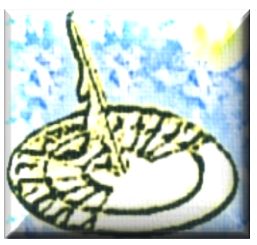RHYTHM HISTORY
The history of Rhythm is fascinating!
The word Rhythm comes from the Greek word, “Rhythmos,” meaning any regular recurring motion.
Rhythm also has origins from another Greek word, “Rheîn,” meaning to flow.
The origins of the word rhythm describe it perfectly!
Rhythm is a recurring pattern of accents: OOM-pah-pah, OOM-pah-pah, OOM-pah-pah or LEFTright, LEFT right, LEFT right. Just as seconds are the pulses within the span of a minute, rhythm defines and measures the pulses in music. Rhythm involves the timing of musical sounds and silences.
Rhythm is the most fundamental layer of music. Music depends on rhythm, since without it, melody could not exist. For eons humans have used rhythmic drumming as a means of communication.
Patterns of pulses have the power to bring an orchestra together. Rock bands rely on rhythm to play together, and these patterns — rhythm — have the power to get people moving and dancing.
 There is rhythm to our heartbeats and rhythm to the moon’s cycles, which regulate the rhythm of the ocean’s tides. The symmetry of the cycles of time, such as hours, minutes, seasons, years, and the motions of the planets, all are excellent examples of rhythm in our lives.
There is rhythm to our heartbeats and rhythm to the moon’s cycles, which regulate the rhythm of the ocean’s tides. The symmetry of the cycles of time, such as hours, minutes, seasons, years, and the motions of the planets, all are excellent examples of rhythm in our lives.
Our spoken words and poetry use rhythm patterns. All languages use rhythm, since words have syllables, which create a flow to the words.
Poets employ rhythmic patterns in order to enhance the meaning of their words and to establish the rhythm of their poetry.
Plato was a famous philosopher and teacher in Ancient Greece. Plato often used rhythm to describe life lessons. His teachings stated that rhythm allowed for “order of all movement.”
The word Music originated in Greek mythology. There, Zeus had 9 daughters who were called the Muses. Each Muse presided over a different art, inspiring artists in their specialty. They were considered artistic expressions of beauty. The word for Music originated with these Muses.
The people of ancient China regarded music as central to the harmony and longevity of the state, and Emperors took the people’s folk songs very seriously. On a quest to gain insight into how their people felt about life, official members of the dynasty were sent to collect popular songs of the day.
Many early cultures used drums to create rhythm patterns, which symbolizes unity during various ceremonies. Native American customs use the drum to represent the heartbeat of the tribe.
Although hardly any notated music remains from ancient days, music historians have studied fragments of old songs and rhythms, translating them into modern notation, which increases appreciation of the origins of music notation.
Rhythm is present in all aspects of our lives, and is the foundation of all music.
